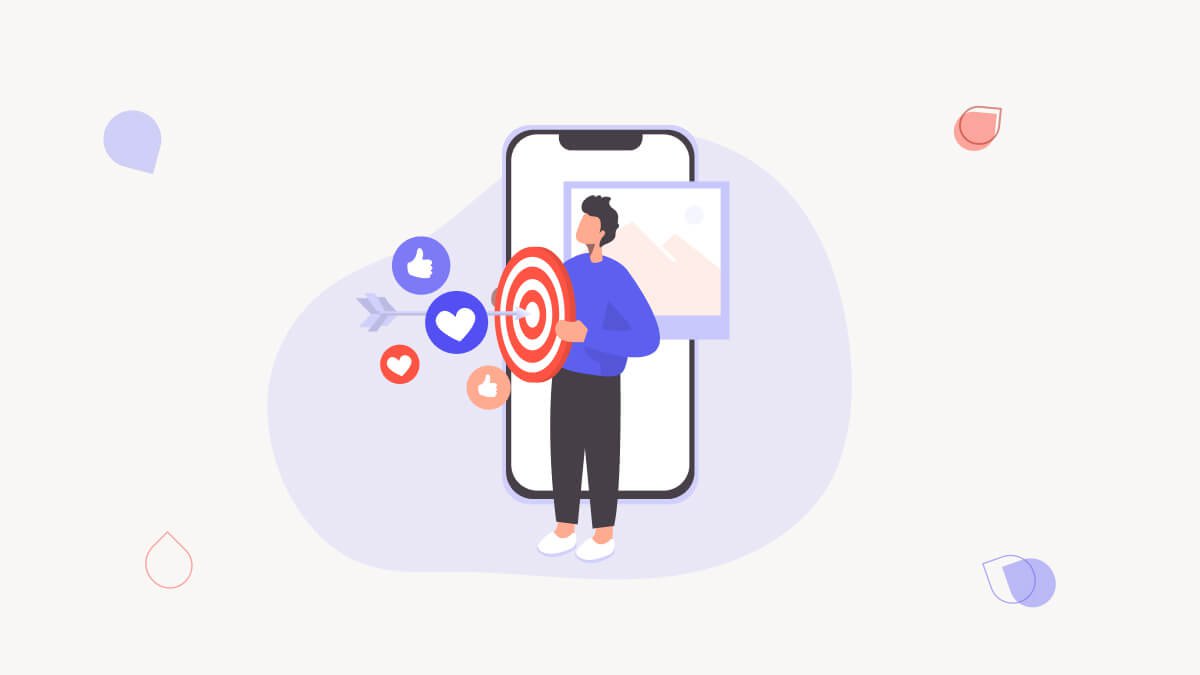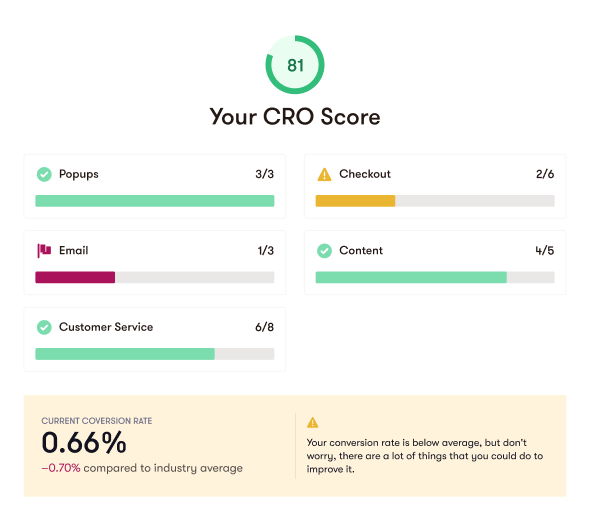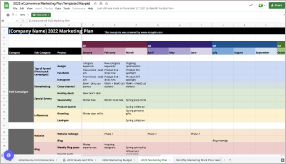
What is Behavioral Targeting? How it Works + Key Strategies
Learn what behavioral targeting is, how it works, and how to target your ideal customer. We cover retargeting, app engagement, purchase behavior, and much more.
DOWNLOAD TEMPLATEWhat’s the secret behind Netflix’s success? Besides the genius subscription model and the fact they digitized before Blockbuster did, their secret power is their use of personalized recommendations.
Instead of spending 4 hours in a local Blockbuster choosing a movie to watch, I could go on Netflix and let the AI choose it for me. And all that’s possible because of behavioral targeting.
Behavioral targeting is not just about finding your ideal customer and showing them the right advertisements. It's about understanding what motivates them and using that information to create better advertising campaigns and more personalized marketing messages. And it’s accessible to everyone, not just top-notch digital marketing agencies.
This article will walk you through the basics of behavioral targeting, including how it works and the different types of targeting you can use to better
What is behavioral targeting?
Behavioral targeting is a way to target ads to people based on the actions they take on your website, app, or with your campaigns - in order to serve them more personalized messages and ads.
The idea is that you can show ads or send personalized email campaigns to people who have already visited your site or who have added a product to their cart and encourage them to finish checking out.
Now, that's not the same as contextual targeting, and here's why.
[Banner][Want to Improve your Targeting?][Work with an Expert Marketer. Hand-picked vetted experts, hire in 72 hours.][Get Started][https://www.mayple.com/welcome-v4/?utm_content=blog-banner-behavioral-targeting][blue]
Behavioral targeting vs. contextual targeting
Contextual targeting is an online advertising method that involves placing ads that fit the context of the page. They typically don't use information about individual users but can use behavioral data to improve the relevance.
Behavioral targeting allows advertisers and marketers to target specific users. And it's built on the idea that the ads shouldn't be relevant to the page but to the user that's visiting that page.
What are the benefits of behavioral targeting?
Behavioral targeting (sometimes called behavioral advertising) is a way to reach customers who are more likely to be interested in your product or service. It's a way to increase engagement and deliver more relevant and personalized marketing messages to your audience.

When your content is personalized to each visitor based on what they're interested in based on their behavior then you have a higher chance of converting them to a paying customer.
Personalized content also improves the user experience, and helps build customer loyalty. Studies show that 87% of consumers say it's important to buy from a brand that really understands them.
Behavioral marketing helps you:
- Make more informed decisions - behavioral targeting gets you the data on what your customers are interested in and helps you create more relevant content and product recommendations for them at every stage of the customer journey.
- Increase engagement - visitors will engage more with personalized marketing messages both on the web and on mobile apps.
- Improve conversion rates - when your engagement increases so do your click-through rates and your conversions.
- Get a higher ROI - the more conversions you have the higher your return on investment (ROI) will be.
- Boost brand awareness - behavioral targeting works on every part of the marketing funnel. As much as it helps users checkout it can also help you gain more brand awareness with your top-of-the-funnel campaigns.
- Increase customer loyalty - studies show that 49% of consumers would likely become repeat buyers if offered a personalized experience.
Types of behavioral targeting
Behavioral targeting can be deployed across a number of different channels, and there are a few types of online behavioral data you can use to market to your customers.
Onsite behavioral targeting
This is the most typical form of targeting where a website records specific user behavior and then targets them based on that behavior. So that could be purchase data, mobile data, and even third-party data from social media platforms.

Network behavioral targeting
This type of targeting involves collecting and sharing data across a variety of sites through third-party cookies. The data is collected anonymously so it doesn't include people's names or addresses. And it's usually provided to the business by the advertising platform.

Now let's talk about the different types of data you can collect to use in your behavioral advertising efforts.
Website engagement
The most common way to use behavioral targeting is by looking at the users that have visited and engaged with your site. You can look at the specific pages they viewed the products they added to the shopping cart, and much more.
All that data lets you personalize the user experience by displaying dynamic content on the page, in popups, email sequences, and advertising campaigns.
You can segment your audience based on their online behavior and serve them with various messages across your omnichannel marketing strategy to bring them back into your marketing funnel.

Campaign engagement
Campaign engagement is another form of behavioral targeting where you target users who have interacted with your advertising campaigns. For example, you can take a group of visitors with high engagement on a specific ad group and create more personalized campaigns for them.
It also refers to your email campaigns and you can create audience segments based on who opened, clicked, or converted from specific emails.
You can resend emails to non-openers, send follow-up emails to people that have clicked but didn't purchase anything, and create sunsetting sequences for people who haven't opened your emails in 60-90 days.
Purchase behavior
Another way to target your audience is to look at their purchase history and see which products they have purchased on your site. You can use that data to send product recommendations, display relevant products and upsell and cross-sell to increase your average order value.
App engagement
Some brands have mobile apps and those provide a ton of information on each user. Apps can collect things like user behavior, how often they opened the app, how long they used it, and a variety of other data points.
Then the brand can use a variety of marketing and advertising strategies to re-engage with inactive users, introduce new features to their most loyal customers, and send personalized in-app messages.
Segment your audience for behavioral targeting
Segmenting your audience is one of the most important steps in behavioral targeting. Segmentation allows you to target specific groups of people with different content, products, and offers based on their behavior.
Target your ideal customers
Behavioral targeting is a great way to target customers who have already visited your site, engaged with your content, made a purchase, or downloaded an app. For example, if you're an eCommerce company and someone has visited the product page for a pair of shoes but didn't proceed to checkout, you can show them ads for those shoes on other sites that they visit later.
This approach is known as "lookalike" modeling since it targets people who resemble those who have already converted into customers. With Facebook advertising specifically, you can create lookalike audiences based off of:
- Users who have visited your website
- Users who have engaged with your content (in this case we're referring to posts on Facebook)
- Users who have purchased from you (i.e., through both desktop and mobile web)
Retargeting campaigns
You can use retargeting campaigns to target people who have visited your website. These are also called remarketing campaigns and they can be used on their own, or in conjunction with other marketing strategies. This is a really popular method for brands that use Google Ads to increase engagement and reduce cart abandonment.

Advertising campaigns
You can also set up a campaign that targets users based on the keywords they’ve searched for or the type of content they’ve consumed. For example, if your business sells eyeglasses and caters to a specific location you would want to reach people who have searched for “eyeglass repair near me”.
The Behavioral Targeting Process
1. Collect the data
The first step in the process is data collection and you can use a lot of sources for this including site analytics tools, customer management platforms (CRMs), mobile apps, and other marketing automation systems.
Things you can (and should collect) include:
- Demographics
- Sites/pages visited
- Session duration
- Purchase history
- Last engagement date
- Frequency of use
- Geographic location
- Site search history
- Behavioral traits or patterns
Make sure all your tracking pixels are installed properly and all the right systems are integrated together. It's also a great idea to use a marketing tool to put this data together and create easy-to-read dashboards for your team to look at.
2. Segment your audience
Now that you've gathered the data it's time to create audience segments based on each user's behavior. Again, if you're using some kind of email marketing tool like Klaviyo or a marketing analytics tool like Glew you could easily create these segments and get them ready to use for your next campaign.
3. Apply the data
The final step is to apply the data and send out your campaign. It could be an email newsletter, an advertising campaign, or an in-app message. Regardless of what channel you're using, it's important to use the data you collected to personalize that messaging and maximize your chances of success.
Don't forget to also monitor and analyze each campaign to see what you could optimize for next time. Don't look for big wins, a series of small wins could make a huge impact on your business.
Takeaways
The good news is that you don’t have to be an expert marketer to use behavioral targeting in your marketing. You just need to understand who your target audience is and what they want from you. Then, you can use the strategies and tools we outlined to reach them effectively.
Need help? Want an expert to look at your campaigns and see what you should tweak? Find them through Mayple today!
[Banner][Want to Improve your Targeting?][Work with an Expert Marketer. Hand-picked vetted experts, hire in 72 hours.][Get Started][https://www.mayple.com/welcome-v4/?utm_content=blog-banner-behavioral-targeting][orange]
















